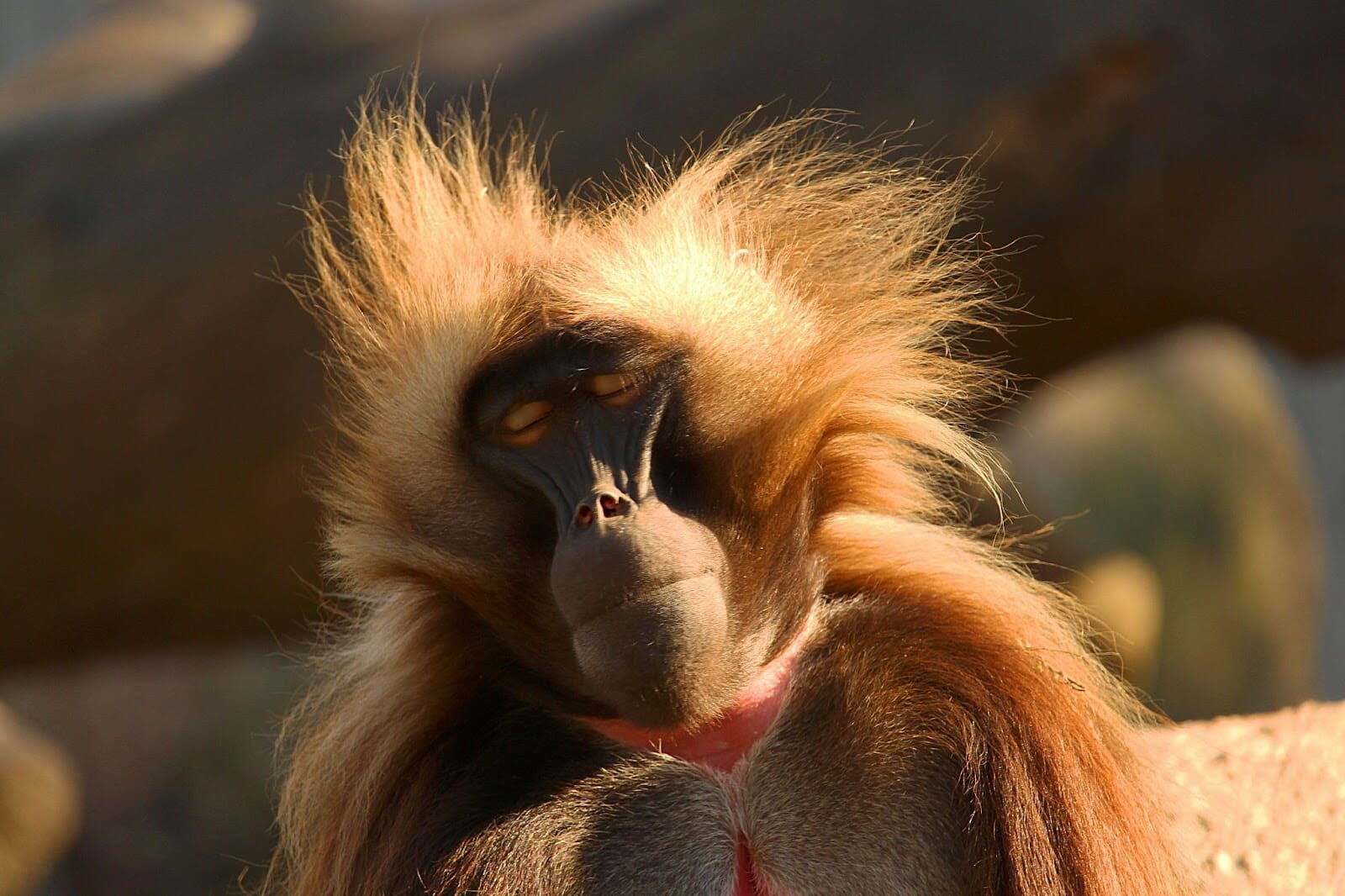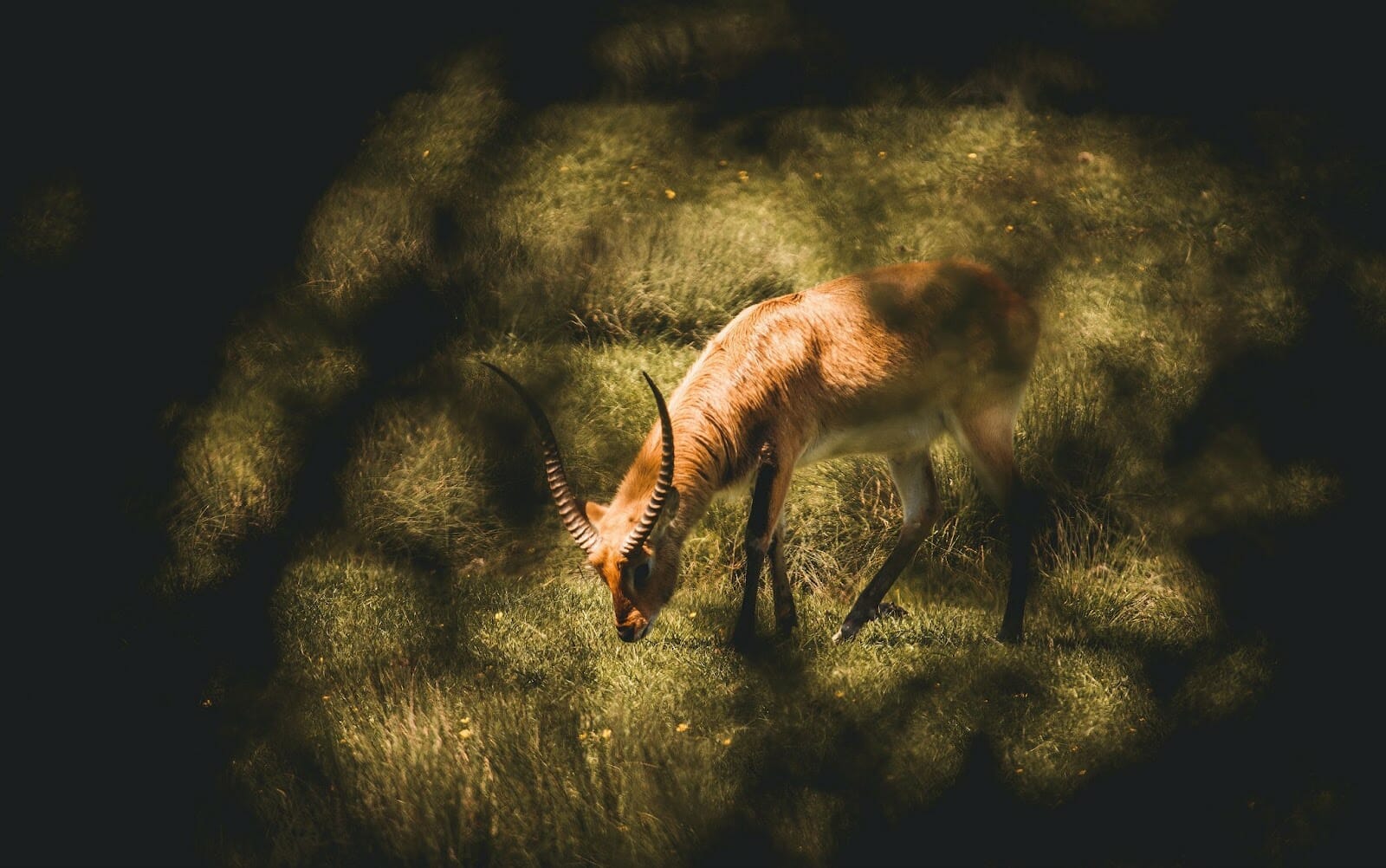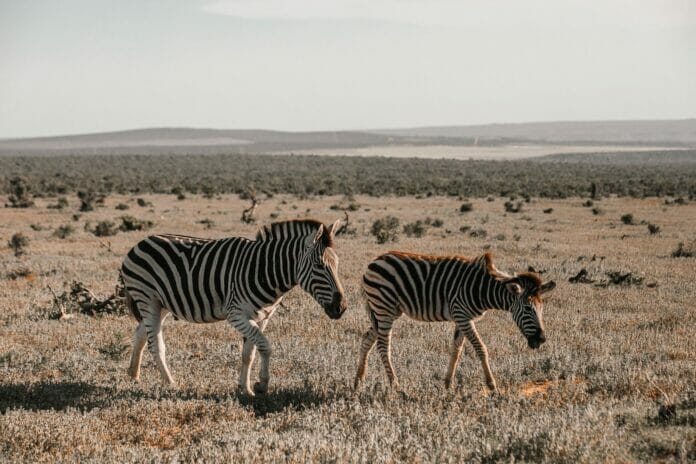Assonance is a poetic device where two or more words have consonants that repeat, but the vowels are different. It is used in literature to create a feeling of rhythm, or to emphasise certain words. An example of assonance can be found in the poem “Safari Day in Kenya” by Januarie York. In this poem, the author has used assonance to emphasise certain words and to create a sense of rhythm.
Let’s take a look at some of the examples of assonance.
Explanation of Assonance
Assonance is the repetition of vowel sounds in nearby words while the consonant sound at the beginning or end may be different. It is mainly used to create musicality, mood, and rhythm in literature. Hence, it is very important to understand it to enhance our literary analysis.
“Safari Day in Kenya” is filled with varied examples of assonance. Here are a few of them:
| “We sped dead ahead” |
| “Stretched out up ahead” |
| “We raced down the grey lane” |
The repeated “e” and “a” sounds in these phrases not only create a harmonious sound but also add to the overall tone of speed and excitement in the story.
Other examples of assonance in literature are:
| “fleet feet sweep by sleeping geese” by Lewis Carroll |
| “Men sell the wedding bells” by E.E. Cummings |
| “Try to light the fire” by Pink Floyd |
By using assonance, authors can manipulate the sound of words to evoke emotions in readers, making it more impactful and memorable to read than usual.

Definition of Assonance in Poetry
Assonance is a literary technique where the repetition of vowel sounds creates an internal rhyme within a phrase or sentence. It adds a musical quality to the text and enhances the overall tone and meaning of the poem.
Here are some examples of assonance in “Safari Day in Kenya”:
| “Baobab tree towering free” |
| “Birds chirp and flirt” |
| “Zebras graze on the plain” |
In each of these examples, the repeated vowel sound within the words creates a subtle musicality to the language.
Using assonance in poetry can help to create a memorable and cohesive piece of literature.
Pro tip – When using assonance in poetry, it’s important to balance it with other literary techniques such as alliteration and consonance to avoid overwhelming the reader with too much repetition.
Importance of Assonance in Poetry
Assonance is a key element of poetry that helps to create a musical and rhythmic effect by repeating vowel sounds in words that are in close proximity to each other. In “Safari Day in Kenya,” the author employs several examples of assonance to create a vivid and immersive depiction of the African wildlife.
| Examples of assonance in “Safari Day in Kenya” include: |
| “Giraffes grazing on grass” – The repetition of the “a” sound creates a sense of harmony and balance that reflects the peacefulness of the scene. |
| “Elephants walking with a sway” – The repetition of the “w” and “a” sounds imitates the sound and movement of the lumbering elephants. |
| “Gazelles leaping gracefully” – The repetition of the “e” and “a” sounds mimics the elegant and fluid movements of the gazelles. |
Overall, assonance serves as a powerful tool in poetry, allowing writers to convey emotions, sensations, and images with incredible accuracy and impact.
Which Line From “Safari Day In Kenya” Contains An Example Of Assonance?
“Safari Day in Kenya” is a poem written by Sylvia Plath that sheds light on the beauty of Kenya’s scenery and culture. One of the poetic elements used in the poem is assonance, which is the repetition of a vowel sound in the same line.
Let’s take a look at some of the lines in the poem that contain examples of assonance.
Brief Description of the Poem
“Safari Day in Kenya” is a poem that paints a vivid picture of the Kenyan landscape and wildlife. It begins with the narrator setting off on a safari adventure and marvelling at the “golden, grassy sea,” and the “zebra dappled hills.” Throughout the poem, the narrator encounters various animals, such as giraffes, elephants, and lions, and describes them in detail.
One literary device used in the poem is assonance, which is the repetition of similar vowel sounds within words. For example, in the line “Giraffes glide and graze,” the “i” sound in “glide” and “graze” is repeated. Similarly, in the line “Elephants trumpet tremendously,” the “e” sound in “elephants” and “tremendously” is repeated.
These examples of assonance help to create a musical and rhythmic quality to the poem, adding to its overall effect.
Author Introduction
As an author, I feel privileged to introduce myself and my work. Writing has always fascinated me, and it gives me immense pleasure to put my thoughts and ideas into words.
“Safari Day in Kenya” is one such work of mine that reflects my love for wildlife and nature. The book is about a group of tourists who embark on a safari tour in Kenya and encounter different animals along the way.
The book also employs the use of assonance to create a melodic and rhythmic effect on the language. Here are some examples of assonance used in “Safari Day in Kenya”:
| The sunset spread over the savannah, painting the land with red and yellow hue. |
| The hyena’s cry echoed in the dry and dusty atmosphere. |
| The elephant trumpeted, announcing his arrival to the safari group. |
Assonance, when used effectively, adds depth and dimension to the language and makes the reading experience more enjoyable.
Theme and Style of “Safari Day in Kenya”
The theme of “Safari Day in Kenya” is to showcase the beauty and adventure of exploring the African savannah, replete with vivid imagery, sensory details, and pronounced assonance.
The style of the poem is free verse, allowing the poet to experiment with different literary techniques such as assonance, which is the repetition of vowel sounds.
Here are some examples of assonance in “Safari Day in Kenya”:
| “It’s a day for monkeys to romp and play” |
| “With a wide-eyed look, we watch nature’s book” |
| “Africa’s pride strides by our side” |
Pro tip: When writing poetry, try to experiment with different styles and literary devices to find what works best for your message and creative expression.
Examples of Assonance in “Safari Day in Kenya”
Assonance is a literary device that uses the repetition of vowel sounds in a sentence, phrase, or line of poetry. In the poem “Safari Day in Kenya” by Steve Noon, you can find several examples of assonance throughout. This article will discuss which line from the poem contains an example of assonance and how it helps to create the atmosphere of the poem.

Line 1 – “Aroused by anticipation and caffeine”
The phrase “Aroused by anticipation and caffeine” exhibits assonance, a literary device that involves the repetition of vowel sounds to create a rhyming effect. This technique creates a musical quality to the text, making it more memorable and enjoyable to read.
Other examples of assonance in “Safari Day in Kenya” include:
| – “Kicking up dust as we drive through the rough, tough terrain” |
| – “Giraffes standing grand, munching on plants” |
| – “The sun, like a giant eye, shines on the savannah wide” |
The use of assonance enhances the imagery in the poem, emphasising the sounds and sights of the safari experience. It also brings rhythm and flow to the text, making it a pleasure to read aloud.
Line 2 – “I sauntered out, safari guidebook in hand”
Assonance is the repetition of vowel sounds in nearby words, and it plays a prominent role in the poetic language of “Safari Day in Kenya.” The poem is full of examples of assonance that contribute to its vivid imagery and musical quality.
| “I sauntered out, safari guidebook in hand” – This phrase uses assonance to create a smooth, flowing rhythm that mimics the gentle movement of the speaker. |
| “Where tall giraffes graze on grasses” – This line features an assonance between “graze” and “grasses,” emphasising the peacefulness and simplicity of the animal’s actions. |
| “Crafty monkeys jump and jive, high-fiving” – The assonance in “jump,” “jive,” and “high-fiving” makes the phrase sound playful and energetic, capturing the spirit of the monkey’s movements. |
The use of assonance throughout the poem captures the essence of the Kenyan landscape and allows the reader to experience the safari through the senses.
Pro tip: Try using assonance in your own creative writing to add musicality and rhythm to your work.
Line 3 – “Jammed in the Land Rover, our luggage tied fast”
The line “Jammed in the Land Rover, our luggage tied fast” from the poem “Safari Day in Kenya” is an excellent example of assonance, a literary device used to create a repetitive sound pattern by repeating vowel sounds within words in close proximity to each other. The prolonged “a” sound in “jammed,” “land,” and “fast” creates an assonance that emphasises the cramped and busy nature of the speaker’s current situation.
Another example of assonance in the poem can be found in the line “With binoculars bobbing and bouncing, we bounded down the bumpy road.” Here, the “o” sound is repeated throughout the sentence, drawing the reader’s attention to the movement and lively atmosphere of the safari trip.
Assonance is a powerful tool used by poets and writers to create a rhythm and mood in their work that engages and captivates the reader. By repeating certain vowel sounds in their writing, authors can emphasise specific words and emotions, making their work more impactful and memorable.
Pro tip: As a writer, try experimenting with different forms of literary devices such as assonance, consonance, and alliteration to create a unique style that stands out.
Line 4 – “Planning our trip through Amboseli, Serengeti, and Ngorongoro Pass”
“Planning our trip through Amboseli, Serengeti, and Ngorongoro Pass” showcases an example of assonance, where the words “Amboseli,” “Serengeti,” and “Ngorongoro” all have a similar vowel sound.
| Here are a few more examples of assonance from “Safari Day in Kenya”: |
| – “We saw a pride of lions lying quietly by the riverside.” |
| – “In the early morning light, we sighted a shy hyena.” |
| – “The cheetahs teach us patience as they sprint and stop and stare.” |
The repetition of vowel sounds in these phrases creates a musical quality and draws attention to the specific words being used. As a result, assonance can be a powerful tool in creating memorable and engaging writing.
Analysis of the Assonance Examples
Assonance is a literary technique which involves the repetition of vowel sounds in a sentence or phrase. In this study, we will look at the lines from the poem, “Safari Day in Kenya”, which contain an example of assonance. We will analyse the words and phrases to figure out how the assonance is used, and how it contributes to the overall feel and impact of the poem.
How the Poet Uses Assonance in “Safari Day in Kenya”
Assonance is a literary device used by poets to create a musical quality in their writing by repeating vowel sounds within a line of verse. In the poem, “Safari Day in Kenya”, the poet uses assonance to create a sense of rhythm and to draw attention to specific words within the poem.
Examples of assonance in the poem include:
| “My safari guide’s eyes shine bright” |
| “Rides by my side with pride” |
| “Rides by my side with pride as we glide” |
In each of these examples, the repetition of vowel sounds creates a sense of harmony and melody that contributes to the overall beauty of the poem.
By using assonance, the poet captures the beauty of the Kenyan landscape and creates a musical quality that draws the reader into the poem and evokes emotions and sensations unique to the experience of a Kenyan safari.

The Effect of Assonance on the Poem
Assonance is a powerful poetic technique that can add depth and meaning to a poem. It refers to the repetition of vowel sounds within words, regardless of their spelling or the consonants that come before or after them. The effect of assonance on a poem can vary, depending on the specific sounds used and their placement within the text.
In the poem “Safari Day in Kenya,” the author uses several examples of assonance to enhance the theme and imagery of the text. For instance, the line “The day wakes and bakes us in its heat” uses the long “a” sound to convey the oppressive heat of the African sun. Similarly, the phrase “The zebra’s fleece is reached and bleached” uses the long “e” sound to emphasise the whiteness of the animal’s fur.
By analysing the assonance examples in this poem, readers can gain a deeper appreciation of the author’s message and intentions.
The Significance of Assonance in Descriptive Writing
Assonance is a literary device that enhances the beauty and melody of descriptive writing. It refers to the repetition of vowel sounds in neighbouring words or syllables within a sentence or a paragraph. The use of assonance provides a lyrical quality to the writing, and it helps to create an auditory image of the objects or scenes being described.
“Saturday was a safari day in Kenya” is a good example of the use of assonance in descriptive writing. The repetition of the “a” sound in “Saturday,” “safari,” and “day” creates a musical quality that is pleasing to the ear. Similarly, the repetition of the “e” sound in “safari,” “Kenya,” and “weekend” adds to the melody of the sentence, and reinforces its descriptive nature.
Another example is, “The pale ape gracefully rose from the lake”. The repetition of the “a” sound in “pale,” “ape,” and “gracefully” creates an almost sing-song quality to the writing, which makes it more interesting and compelling to read.
Using assonance in descriptive writing can add a layer of depth to the imagery being portrayed, and can create a more engaging and melodic reading experience for the audience.


